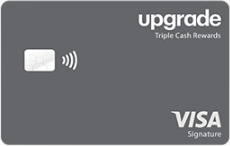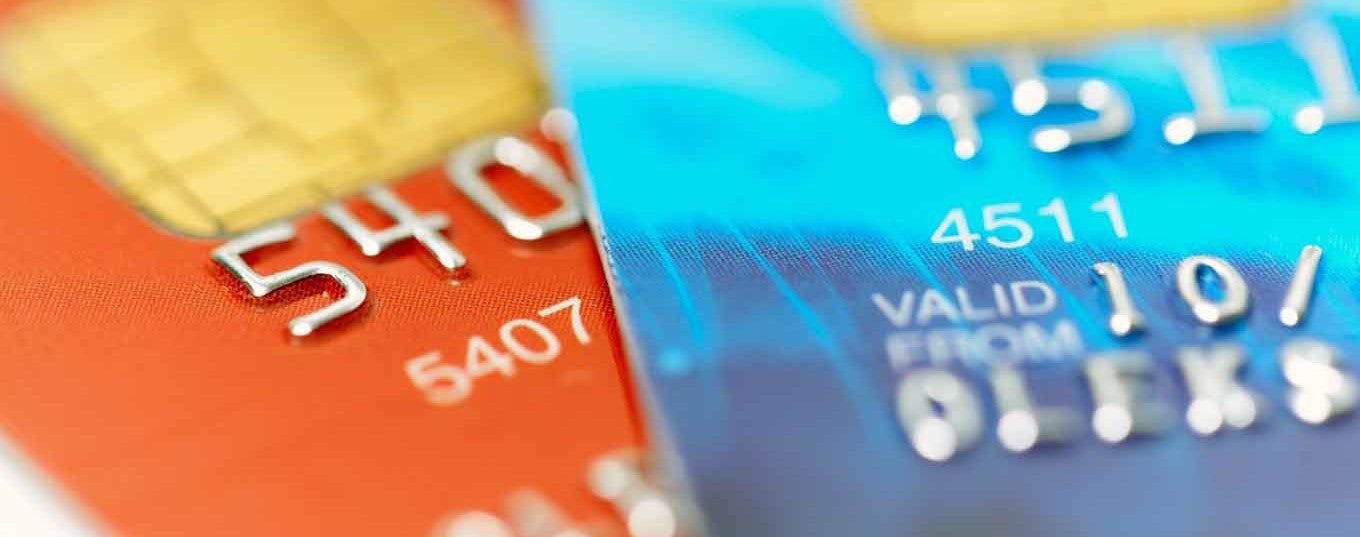Amid health and safety concerns during the coronavirus pandemic, the popularity of contactless credit cards soared. This method of payment allows you to use your credit card for a purchase by simply tapping or holding it on the card reader, as opposed to inserting or swiping it.
While you may or may not already be familiar with how to use contactless credit cards, you may be wondering, how do contactless cards work? Here’s a look at the tech that enables contactless credit card payments, as well as the pros and cons and overall safety of using contactless credit cards.
What Is a Contactless Credit Card?
Physically, a contactless credit card looks like a regular credit card, with the bank name and the account number on the front of the card and the ubiquitous magnetic stripe on the back of the card. However, contactless credit cards allow cardholders to “tap and pay” instead of inserting or swiping their card in a merchant payment machine.
This enables a consumer to make a purchase at a retail location without ever having to physically touch a payment device, which is why contactless payments increased during the pandemic.
What Does Contactless Payment Mean?
The term contactless payment more broadly refers to a form of payment that involves no touch. You can make a contactless payment using a credit card as well as a debit card, gift card, mobile wallet, or wearable device.
Regardless of the form, contactless payments rely on the same technology to make a payment without needing to swipe, enter a debit or credit card PIN, or sign for a transaction.
How to Know If Your Credit Card Is Contactless
Major credit card providers like MasterCard and Visa offer contactless cards. You can determine if your credit card is contactless-capable by looking for a contactless card symbol on the back of your card. This symbol looks like a WiFi symbol flipped on its side, with four curved lines that increase in length from left to right.
Even if your card has this symbol on it, you’ll also want to check that the merchant has contactless readers. You can figure this out by looking for that same symbol on the card reader or asking the merchant directly.
How Contactless Credit Cards Work
Like other credit cards, contactless credit cards have small chips embedded in them. But instead of requiring you to insert the card, this chip emits electromagnetic waves that transfer your payment information when you place the card close to a payment terminal that accepts contactless payments.
You don’t actually even need to tap your contactless credit card to pay — all you have to do is place your card within a few inches of the payment terminal. This will initiate payment.
You might then have to wait a few seconds while the transaction processes. The terminal will usually give a signal when the transaction is complete, such as by beeping or flashing a green light.
Technology That Enables Contactless Credit Card Payments
Instead of inserting a credit or debit card into a merchant payment terminal, contactless credit cards rely on radio frequency identification technology (RFID) and near-field communication to complete a retail transaction.
The “no touch” concept is driven by a contactless card’s short-range electromagnetic waves, which hold the cardholder’s personal data, including their credit card account number. This information is then transmitted to the merchant’s payment device. Once the device grabs the airborne card information, the transaction can be completed and the purchase confirmed.
Pros and Cons of Contactless Credit Cards
Like most consumer finance tools, contactless credit cards have their upsides and downsides. Here’s a snapshot of the pros and cons to note:
| Pros
|
Cons
|
| Convenient to use |
Not always available overseas |
| Secure |
Low transaction limits |
| Increasingly offered |
Not always reliable |
| Better for merchants |
|
Pros
These are the main upsides of contactless credit cards:
• Convenient to use: Contactless credit cards are extremely convenient to use once you get the hang of how credit cards work when they have this feature. All a user has to do is wave their contactless credit card in front of the card reader, and the deal is done in a matter of seconds. Plus, you can avoid touching any surfaces in the process.
• Secure: With data thieves regularly on the prowl, “tap and pay” and “wave and pay” technologies are highly protective of a consumer’s personal data. All of the data is stored on a password-protected, fully-encrypted computer chip embedded inside the card, making it difficult for a financial fraudster to steal a user’s personal information.
• Increasingly offered: The availability of contactless payments has increased in recent years, and many brand-name companies now offer the option. Companies may even offer discounts and loyalty point details that are immediately added to a consumer’s account at the point of sale.
• Better for merchants: Companies that offer contactless credit/debit card payments also benefit from “no touch” card technology. Aside from superior operational capability and faster transactions, merchants get a better customer experience and formidable fraud protection from contactless payment technology, with no extra cost. That’s because merchants pay the same transaction processing fee with contactless payments as they do with regular credit card transactions.
Recommended: Tips for Using a Credit Card Responsibly
Cons
Of course, there are downsides to contactless credit cards as well:
• Not always available overseas: Contactless payments may not work abroad, given the recent expansion of a new card payment technology. Additionally, consumers may be charged foreign transaction fees when they do use contactless payments overseas, depending on the specific country’s credit card payment laws.
• Low transaction limits: Contactless card users may find they can’t cover large transactions, like a laptop computer or king-size bed. That’s because merchants may issue those limits until they’re convinced contactless payments (like any new technology) are completely safe, secure and free of any fraud threats. In the meantime, contactless card-using consumers can always use the same credit card to make a big purchase by using “chip and sign” or “chip and swipe” card technologies.
• Not always reliable: Contactless credit card transactions aren’t always reliable, as sometimes the payment won’t go through even though a reader indicates that it accepts contactless payments. This could cause someone to have to resort to swiping their card instead to complete the transaction.
Recommended: What is a Charge Card
Guide to Using a Contactless Credit Card
When using a contactless credit card, the transaction is enabled and completed in three key steps: look, tap, and go.
1. Look. The consumer checks for a contactless symbol on a merchant’s payment device (this will look like a WiFi signal tipped on its side).
2. Tap. After being prompted by the payment device, the consumer will wave the credit card an inch or so over the payment device, or actually touch (tap) the credit card on the payment terminal. This is why the process is sometimes referred to as credit card tap to pay.
3. Go. Once the wave or tap is executed, the payment device picks up the transaction, confirms the credit card payment, and completes the transaction.
Be mindful that if you carry multiple contactless credit cards, you may want to keep those cards away from a terminal that accepts contactless payments. This will help ensure the correct credit card is being charged. Instead of holding your wallet or purse over the payment terminal, take out the specific card you’d like to use instead.
Recommended: When Are Credit Card Payments Due
Are Contactless Credit Cards Safe?
Contactless payment cards basically offer the same anti-fraud protections as any card that relies on a credit card chip.
This is because the chip in contactless credit cards creates a one-time code for each merchant transaction. Once the payment is confirmed and the transaction is approved, the code disappears for good. That makes it virtually impossible for a financial fraudster to steal a consumer’s personal data, as they can’t crack the complicated algorithmic codes financial institutions use with chip-based payment cards.
Additionally, a contactless card is equipped with electromagnetic (RFID) shielding, which helps keep card information from being “skimmed” by data thieves. In turn, this removes another data security threat from the credit card transaction experience.
Recommended: Can You Buy Crypto With a Credit Card
The Takeaway
Contactless credit cards are emerging as an effective payment technology that’s gathering steam among consumers and retailers alike. Thanks to the tech that enables contactless credit card payment, these credit cards allow you to simply wave or tap the credit card within range of a payment terminal that accepts contactless payments. You can figure out if a payment terminal — and your credit card — offer contactless payment as an option by looking for the contactless payment symbol.
If this is a feature that interests you, it might be worth looking out for when picking a credit card that works for you.
The SoFi Credit Card offers unlimited 2% cash back on all eligible purchases. There are no spending categories or reward caps to worry about.1
Take advantage of this offer by applying for a SoFi credit card today.
FAQ
Are there extra charges for using contactless credit cards?
No, there are no extra charges for using contactless credit cards. This is true for the consumer who’s tapping their card as well as for the merchant accepting contactless payments.
What are the risks with contactless credit cards?
While contactless credit cards generally offer enhanced security, there is the risk of a thief skimming cards in your wallet by using a smartphone to read it. However, the thief must be within very close range to do so. Perhaps the easiest way for a thief to get ahold of your information is by stealing your physical credit card, which is a risk with any type of credit card.
Where can I use my contactless credit card?
You can use your credit card at any retailer that has a terminal accepting contactless payments. You can determine if a card reader will take your contactless credit card by looking for the contactless payment symbol.
What happens if I lose my contactless credit card and someone else uses it?
If your card is stolen or lost, contact your credit card issuer immediately. Check your recent credit card transactions for any fraudulent activity, and make sure to report that information to your credit card issuer.
Photo credit: iStock/milan2099
Financial Tips & Strategies: The tips provided on this website are of a general nature and do not take into account your specific objectives, financial situation, and needs. You should always consider their appropriateness given your own circumstances.
The SoFi Credit Card is issued by SoFi Bank, N.A. pursuant to license by Mastercard® International Incorporated and can be used everywhere Mastercard is accepted. Mastercard is a registered trademark, and the circles design is a trademark of Mastercard International Incorporated.
1See Rewards Details at SoFi.com/card/rewards.
Third-Party Brand Mentions: No brands, products, or companies mentioned are affiliated with SoFi, nor do they endorse or sponsor this article. Third-party trademarks referenced herein are property of their respective owners.
1Members earn 2 rewards points for every dollar spent on purchases. No rewards points will be earned with respect to reversed transactions, returned purchases, or other similar transactions. When you elect to redeem rewards points into your SoFi Checking or Savings account, SoFi Money® account, SoFi Active Invest account, SoFi Credit Card account, or SoFi Personal, Private Student, or Student Loan Refinance, your rewards points will redeem at a rate of 1 cent per every point. For more details please visit the Rewards page. Brokerage and Active investing products offered through SoFi Securities LLC, member FINRA/SIPC. SoFi Securities LLC is an affiliate of SoFi Bank, N.A.
SOCC0522024
Source: sofi.com

